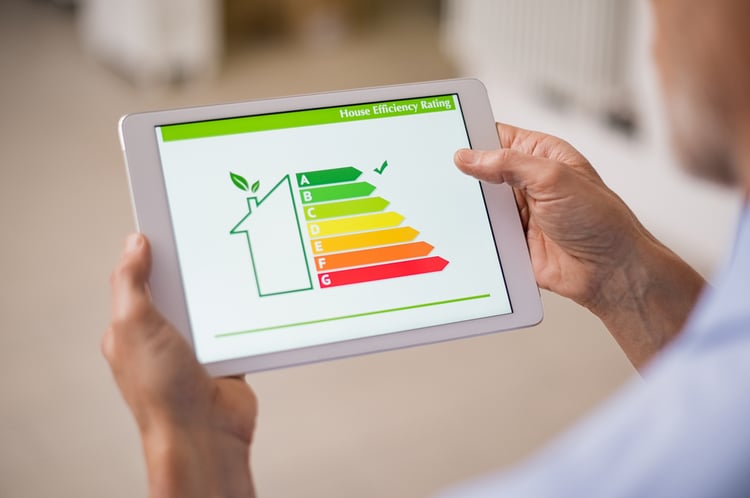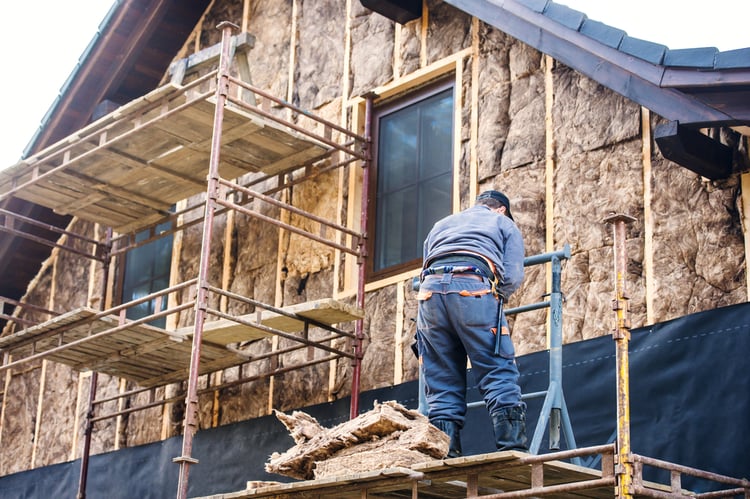The New Federal Tax Credits and Rebates for Home Energy Efficiency

The Inflation Reduction Act (IRA) not only renewed the 30% federal tax credit for solar power systems. The incentive is now available for stand-alone energy storage, and it will cover a wider range of renewable technologies starting from 2025. The IRA also restored and improved home energy efficiency incentives that expired in 2021, while introducing new ones.
Get a professional MEP design for your building and qualify for tax incentives and rebates.
Here we will provide an overview of the new incentives for energy efficiency in the residential sector, which include both federal tax credits and rebates:
- Section 25C Investment Tax Credit for Clean Energy Property
- HOMES Rebate Program
- High–Efficiency Electric Home Rebate Program
Homeowners who qualify for these incentives can claim the Investment Tax Credit and one of the two rebates. The Residential Efficiency and Electrification Rebates program offers incentives for overall home upgrades that improve efficiency, while the High-Efficiency Electric Home Rebate Program offers individual incentives for specific upgrades and equipment.
Section 25C Investment Tax Credit for Clean Energy Property

The IRA introduced a 30% federal tax credit for residential energy efficiency upgrades, similar to the solar tax credit. This incentive has a limit of $1,200 per year, but it can be increased to $2,000 per year for projects that include certain energy efficiency measures:
- Heat pumps for HVAC applications
- Heat pump water heaters
- Biomass stoves
- Biomass boilers
The federal tax credit also covers the electrical wiring upgrades needed by new equipment such as heat pumps. This includes panelboards, sub-panelboards, feeder circuits and branch circuits that will be used by equipment eligible for the 30% tax credit. This tax incentive will be available from 2023 to 2032.
The Investment Tax Credit for Clean Energy Property had already been available in the past until 2021, but the new version introduced by the Inflation Reduction Act is much better. The previous tax credit covered 10% of the cost of eligible measures, subject to a lifetime cap of $500. The new tax credit has a higher cap that is renewed each year - $1,200 or $2,000 depending on the energy efficiency measures implemented.
IMPORTANT NOTE: The old 10% tax credit with a $500 lifetime limit still applies in 2022. The new 30% tax credit with a $1,200 annual limit becomes available in 2023.
HOMES Rebate Program

HOMES stands for “Home Owner Managing Energy Savings”, and this rebate program offers incentives for home energy upgrades based on the following conditions:
- Property type: Single-family or multifamily
- Percentage energy savings achieved
- Being considered a low-income household
In the case of single-family homes, energy upgrades qualify for a $2,000 rebate if they achieve energy savings from 20% to 35%, and $4,000 for savings over 35%. In both cases, the rebate amount is limited to 50% of project costs. The HOMES rebate amount is doubled for households below 80% of the area median income: up to $4,000 for 20-35% savings, and up to $8,000 for savings over 35%.
As you might expect, the rebates are higher for multifamily homes:
- Up to $2,000 per dwelling and $200,000 per building when achieving 20-35% energy savings.
- Up to $4,000 per dwelling and $400,000 per building when achieving energy savings of over 35%.
The Inflation Reduction Act has established a $4.3 billion budget for the HOMES rebate program.
High–Efficiency Electric Home Rebate Program
Unlike the HOMES program, which offers incentives for overall energy upgrades, the High-Efficiency Electric Home Rebate Program provides incentives for specific upgrades:
|
Type of Upgrade |
Maximum Rebate |
|
Heat pump water heater |
$1,750 |
|
HVAC heat pump |
$8,000 |
|
Electric stove/ cooktop/ range/ oven Heat pump clothes dryer |
$840 |
|
Electric load service center |
$4,000 |
|
Insulation, air sealing and ventilation |
$1,600 |
|
Electric wiring |
$2,500 |
These rebates can be combined, but the maximum amount available for a single household is $14,000. There are also some important conditions to keep in mind:
- The program is available for households below 150% of the area median income.
- The rebate is limited to 50% of costs in households between 80% and 150% of the area median income.
- The rebate can cover 100% of costs in households below 80% of the area median income.
The IRA has established a budget of $4.275 billion for this rebate program, which means the total budget across both programs exceeds $8.5 billion. You can combine the 30% federal tax credit with any of the rebates, but not both rebates (they are mutually exclusive). Also keep in mind there are separate tax credits for solar power and energy storage, which are independent from the energy efficiency tax credit.

Michael Tobias
Michael Tobias, the Founding Principal of NY Engineers, currently leads a team of 150+ MEP/FP engineers and has led over 4,000 projects in the US
Join 15,000+ Fellow Architects and Contractors
Get expert engineering tips straight to your inbox. Subscribe to the NY Engineers Blog below.

